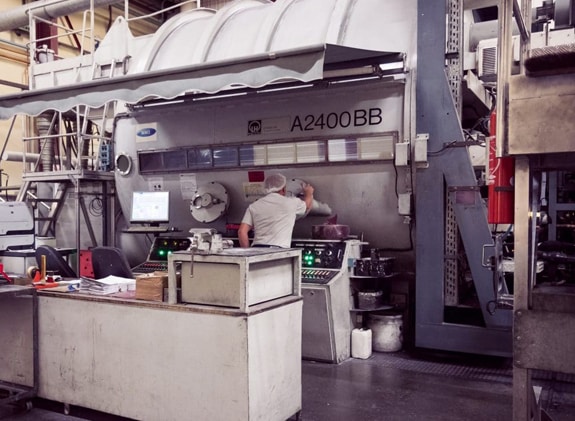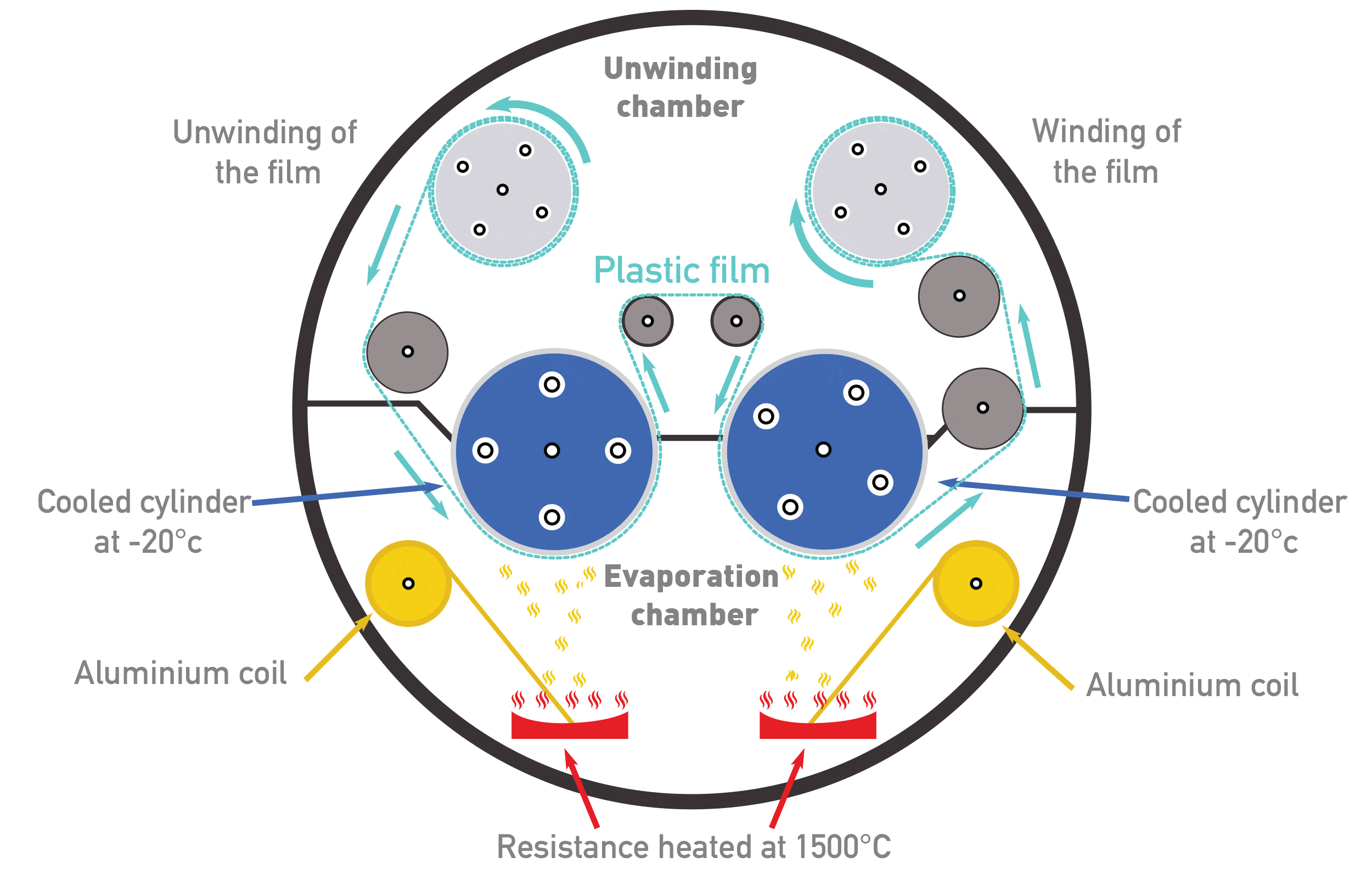Metallising
Vacuum metallization consists in evaporating aluminum (99.5% purity) to give a metallic effect to flexible substrates (plastic films, textiles).
In contact with crucibles heated to very high temperatures (1500 ° C), the aluminum changes from a solid state to a gaseous state. Then it condenses on the film, which runs on two cooled drums (in order that the heat does not melt the flexible substrate).
Deposit : the thickness of the aluminum, also known as “the filler”, can vary from 5 to 80 nanometers, depending on the application.
Flexible substrate : Films from 6 to 250 microns – Fabrics
Why vacuum metallization ?
The metallisation is done under vacuum, because the temperature can be reduced to 1500 ° C, instead of 3000 ° C at normal atmospheric pressure. On the one hand, it is therefore an important energy saving. On the other hand it avoids oxidation of the aluminum and gives a bighter appearance to the product.



